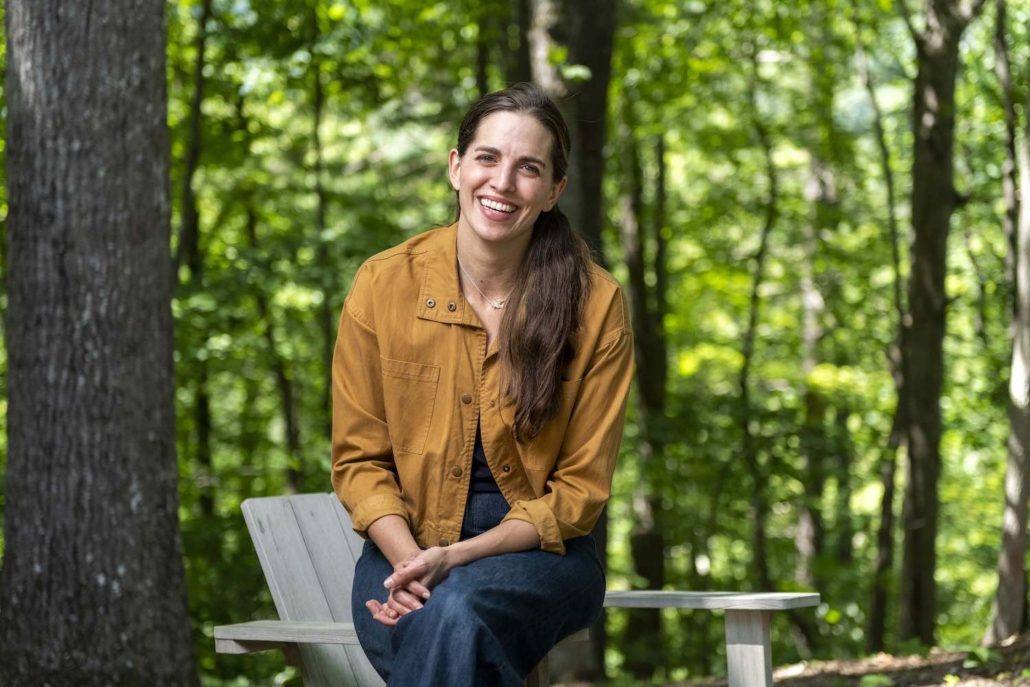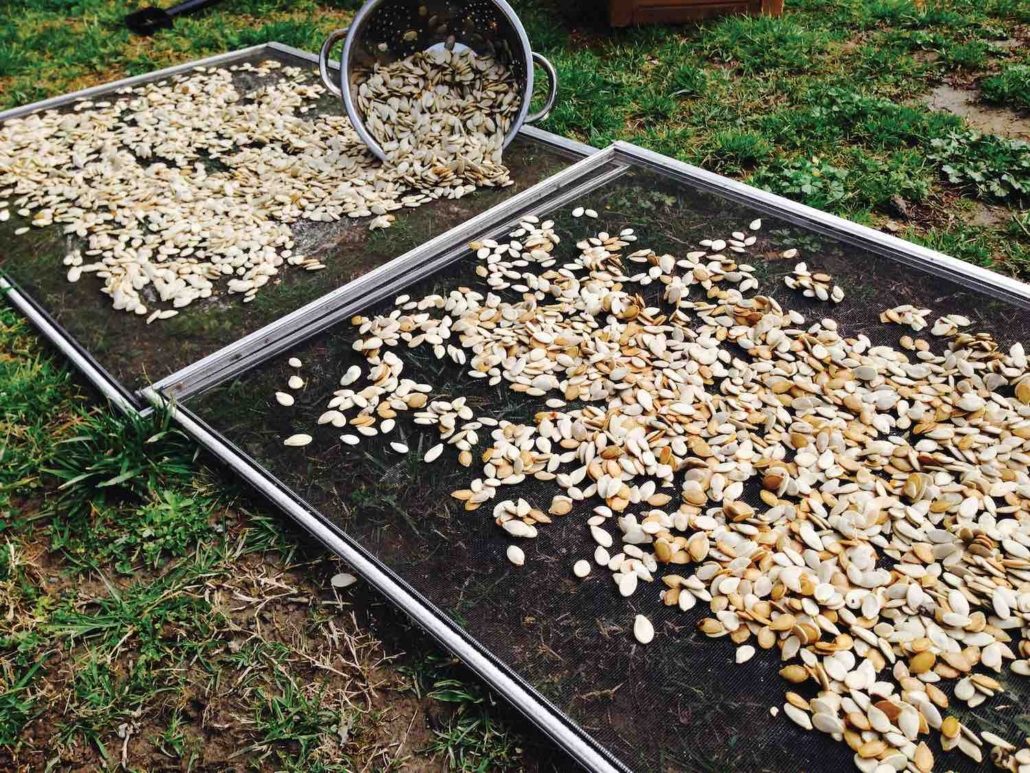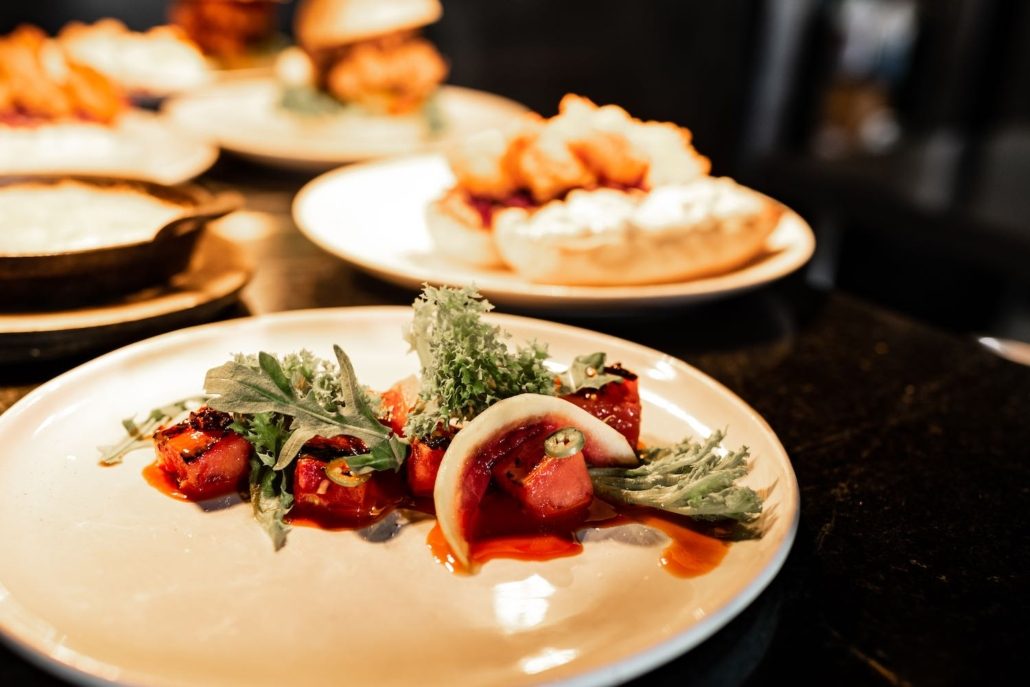APPALACHIA RISING
Asheville restaurants, chefs, makers and farmers preserve, honor and advance the legacy of Appalachian foodways
By Kay West
***
First things first. It’s apple-AT-cha. Not appa-LAY-shuh. Say it the second way to people who can trace their roots back multiple generations across the hundreds of counties in 14 states that comprise Appalachia (as defined by the Appalachian Regional Commission) and you’re liable to get a rebuke—or a “bless your heart,” which is nearly the same thing.
Defining a cuisine in an area that spans 206,000 square miles from southern New York to northern Mississippi is a quixotic task. This swath of the country has long been challenged economically, but it is rich in natural resources and resourcefulness. One commonality is a deeply embedded devotion to the land and waterways and the ingenuity to wrest the most from it.
In south central Appalachia, Western North Carolina encompasses 29 counties and the Qualla Boundary owned by the Eastern Band of the Cherokee Indians. To be sure, the region’s earliest culinary heritage comes from the Cherokee, whose practices and skills at coaxing food from the lush forests, rivers and limited farmable acreage were emulated by white settlers who began arriving in the mid-18th century in what is now Asheville and the broader region of Western North Carolina.
These culinary practices and customs were absorbed and assimilated into what became known in the 19th and 20th centuries as “mountain food” or “poor people food,” or most derisively—reflecting long-held prejudices about Appalachia—“hillbilly food.”
At the same time, Black communities developed their own culinary customs, birthed by slaves in the South, applying cooking techniques from Africa with what they could grow for themselves on plantation land, and using wild meats such as squirrel and rabbit and throwaway cuts from domestic livestock the plantation owners did not eat.
Today, the influences of these traditions are being woven into a culinary landscape that is both rooted in history and being reshaped by talented chefs who seek to celebrate, elevate and redefine the food of Southern Appalachia. And as Asheville continues to grow, its dining scene becomes even more diverse. In 2022, two of the national James Beard Awards went to Asheville restaurants that reflect the city’s now global influences: Chai Pani (Indian street food) was named Outstanding Restaurant and Cúrate (Spanish tapas) was recognized for Outstanding Hospitality.

Chef Katie Button, owner of Curate
GENESIS
One of the best-known agricultural practices among the Cherokee is known as “three sisters,” a term that refers to three crucial crops— corn, beans and squash—as well as a symbiotic planting method.
“You start your corn first and let it get a certain size, then plant pole beans to climb the cornstalks and plant squash under that to keep the weeds down,” explains Nancy Long, who owns Long Family Farms & Gallery in Murphy, NC, alongside her husband, Harold. Harold is an enrolled member of the Eastern Band of Cherokee and one of 10 children. “If they didn’t farm it, forage it, fish it or hunt it, they didn’t have it,” says Nancy. “That’s how he grew up.”
The property Nancy and Harold purchased in 2015 in Cherokee County is 32 acres of deeded land and eight acres of tribal land. Committed to honoring Cherokee and Appalachian history, they farm the land with heirloom varieties and organic practices and assemble garden kits for distribution to Eastern Band families.
“Each Cherokee Tribal Garden Kit has 10–15 varieties of seeds. Some are things known to be Cherokee, like candy roaster squash and tan pumpkins, and others are regular things like cucumbers and tomatoes,” she says. “We provide 900 kits to encourage members to plant gardens, grow and be self-sufficient.”

Seeds at the Long Family Farm in Murphy.
CHANGING THE CONVERSATION
For well over a century, the people and foods of Appalachia have been depicted in problematic ways, from 19th century literature to popular culture. Movies, TV shows and books have often portrayed the region’s people as simple or unsophisticated—much like the Clampetts from the TV sitcom “The Beverly Hillbillies,” which aired for nearly a decade in the 1960s and 1970s—while the food was similarly derided.
Interestingly, a shift has occurred over the last several years and Appalachian cuisine is now being celebrated, even copied, around the country.
“The foods associated with Appalachia that were once considered coarse, unsophisticated and unacceptable are now trendy, foodie food—and isn’t that weird?” says Erica Abrams Locklear, author of the 2023 book Appalachia on the Table and a professor of English at University of North Carolina, Asheville. “The evolution from ridiculed ‘poor people food’ to acclaimed chefs and restaurants is head spinning.”
One of the first local chefs to give simple food a spin in an upscale setting was John Fleer, owner of the popular Rhubarb restaurant in downtown Asheville and a five-time James Beard Award finalist. Fleer developed an early commitment to local foods and cuisines, elevated to fine dining, while a chef at the very tony resort Blackberry Farm in Tennessee.
“I wanted to anchor myself in East Tennessee and source regional and local products,” Fleer says. “I called it foothills cuisine so it could also apply to other foothills regions around the world.”
Some of Fleer’s Tennessee neighbors included Muddy Pond Sorghum, Cruze Farm Dairy and Benton’s Smoky Mountain Country Ham, the latter of which had been operating in relative obscurity since 1947 until Blackberry Farm began spreading the gospel of Allan Benton’s hams to national fame.
When Fleer opened Rhubarb in 2013, he honed in on his mission to spotlight local, small farmers and producers who tell the stories of this region of Appalachia. Benton’s country ham retains a place on the Rhubarb menu, joined by Gaining Ground Farm in Leicester, Sunburst Trout in Waynesville, McConnell Farms in Hendersonville, rabbit from Sospiro Ranch in Brevard and Vandele Farms pork from Lake Lure.
“So much of what we do is seasonal,” Fleer says, “and we know the rhythm of our producers so well we can have a more freestyle approach to cooking and riff on the rhythm of the products.”

The seasonal dishes at Benne on Eagle.
THE STORY OF PLACE
Fleer’s drive to tell a story of place with purpose brought him to the attention of the developers of The Foundry Hotel, which renovated and reimagined a former steel manufacturing building that sat in a downtown Asheville neighborhood known as The Block. The once-thriving center of Black commerce and business had been decimated by urban renewal razing starting in the mid-1960s.
“Our original mission for the property was to create connection with the community that had been here,” says General Manager Larry Crosby. “When it came to planning the restaurant, we felt John [Fleer] shared a vision connecting the regional Appalachian products with the heritage and people of The Block.”
Fleer partnered with The Foundry to create the culinary profile and design the space for Benne on Eagle, a name that recognizes connection to the benne seed (an heirloom sesame seed) coming on the slave ships through the Middle Passage to Virginia and Charleston, SC. It also signifies the prospect of sowing new seeds with historical heft on The Block.
Fleer enlisted Asheville native and chef Hanan Shabazz, who once owned Shabazz Restaurant on Eagle Street, to help guide the kitchen in honoring The Block’s soul food traditions. He also hired rising young Black chef Ashleigh Shanti as Benne’s first chef de cuisine. The Virginia native’s study of The Block, Southern soul food, African diasporic influences and local ingredients led to what was dubbed a Black Appalachian or Afralachian culinary profile, and national acclaim for her and Benne.
Shanti left the restaurant in 2019 (as did Fleer in 2022), but Crosby says Benne remains committed to its guiding principles and has since recruited other chefs who shape the menu with their own stories and influences—all while honoring Benne’s place in the ongoing story of The Block.
“We look at it as holding the torch,” Crosby says. “If Benne can help draw people to this neighborhood, to come to know The Block, we are honored to do that.”
Although firmly rooted in the legacy of the region’s foodways, the definition of what constitutes “Southern” or “Appalachian” food is constantly shifting, shaped by countless farmers, chefs and bakers who are remaking the flavors with the infusion of their own backgrounds and tastes.
Save
Save
Save
Save
Save
Save
Save
Save
Save
Save

Chef John Fleer, owner of Rhubarb

Chef Meherwan Irani, owner of Chai Pani
THE WEEKLY REVEL
Sign up for your free handpicked guide to enjoying life around Asheville.
Available weekly from May to October.





